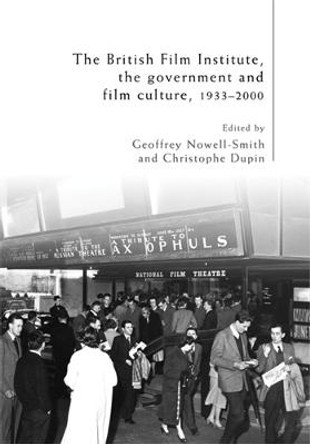Description
About the Author
Murray Smith is Professor of Film and co-director of the Aesthetics Research Centre at the University of Kent, and a Laurance S. Rockefeller Fellow at Princeton University's Center for Human Values for 201718. He was President of the Society for Cognitive Studies of the Moving Image from 201417. He has published widely on film, art, and aesthetics. In addition to the recent Film, Art, and the Third Culture: A Naturalized Aesthetics of Film (Oxford, 2017), his publications include Engaging Characters: Fiction, Emotion, and the Cinema (Clarendon); Trainspotting (BFI); Film Theory and Philosophy (co-edited with Richard Allen) (Clarendon); Contemporary Hollywood Cinema (co-edited with Steve Neale) (Routledge); and Thinking through Cinema (co-edited with Tom Wartenberg) (Blackwell).
Reviews
[A] fascinating insider's tour of a third research culture at a crossroads of the humanities and natural sciences...No matter where its seeds fall and germinate, the book is a landmark development in the growing relation between aesthetic philosophy, moving image studies, and cognitive-scientific theories of cinema and other arts. * Trevor Ponech, Notre Dame Philosophical Reviews *
What Smith is calling for...[is] a truer form interdisciplinarity - not the humanities-only kind that might bring together, say, philosophy and film theory, but the much broader sort interdisciplinarity that bridges the gap between the two cultures by bringing together neuroscience and film theory, or evolutionary science and film history, or ecological ideas of niche construction and ideas of cinematic empathy... [a work of] magisterial authority. * David Andrews, Evolutionary Studies in Imaginative Culture *
Murray Smith's Film, Art, and the Third Culture: A Naturalized Aesthetics of Film is a powerful intellectual force whose impact will be difficult to reckon due to the depth of its analysis and breadth of its scope...[one of] the most influential publication[s] of the new century so far...a work which is truly revolutionary in insight, method, and scope. * Rafe McGregor, Four by Three *
[Smith's] book offers a thorough and nuanced theoretical account of emotions in relation to film art, and then develops this into an eloquent, convincing and deeply satisfying critical and metacritical exploration, which one feels could not have been got to without the help of the science...[Smith] pulls off the rare feat of demonstrating that a naturalistically informed approach can indeed make us not only better theorists, but better appreciators and interpreters. * James Zborowski, Screen *
Murray Smith's latest book just might be the shiniest example of what C.P. Snow hoped for when he first urged scientists and humanists to work together...Smith's ability to provide a naturalistic explanation of [a wide range of cognitive and emotional] capacities, all the while keeping his discussion in line with philosophically interesting issues, is outstanding, but what marks this book as a breakthrough is its author's success in unveiling the relevance of these capacities in one's experience of art...[Smith] exemplifies how scientific approaches to art can go hand in hand with art criticism...[he] is to be congratulated for the massive amount of information he has put together, and for the clear, engaging way of presenting them and explaining them. All things considered, [Smith]'s book is an enjoyable read, intellectually stimulating, (meta)philosophically intriguing, aesthetically rewarding, and scientifically exemplary. * Iris Vidmar, Philosophy in Review *
...every now and again our community produces excellent research which brings some of the most recent experimental information directly to bear on the questions that we care most about: how we experience art, what sets aesthetic experience apart from other kinds of experience, why art matters to us. Smith's [Film, Art, and the Third Culture is a highly valuable contribution] not just to these concerns, but also to the metaphilosophy of aesthetics, that is to say, to how we as philosophers should think about the relations between...different approaches, and exactly which elements of our psychology can be fruitful to specific debates in philosophical aesthetics. * Elisabeth Schellekens, Estetika *
Smith [has] given us arich and interesting [work] about the relationships between aesthetics and the sciences of mind. [Smith] addresses the relations among experiential, psychological, and neuroscientific understandings of a wide range of aesthetically relevant phenomena, particularly as they occur in film...[making a] valuable contribution to a project that remains fledgling: that of taking seriously the relevance of the sciences to our conceptions and explanations of experiential phenomena in aesthetics and the philosophy of art. * Sherri Irvin, Estetika *
Smith's writing demonstrates considerable skill in its integration of informed scientific explanation, philosophical review, and application of a wide range of film examples - from classical and contemorary Hollywood as well as from European and Asian art cinema - with surprisingly productive comparisons such as between Ozu Yasujiro's The Flavour of Green Tea over Rice (1952) and the works of Stan Brakhage. I cannot tell film theorists what to read, and even if could, why would they listen to a philosopher? But I want film theorists to pick up this book because it offers them new and rich resources for reflecting on their practices and has just the right tone to solicit the reader's collaboration. Film, Art, and the Third Culture initiates a dialogue between natural scientists, philosophers, and film theorists, one that I very much hope will continue. * Katherine Thomson-Jones, Journal of Aesthetics and Art Criticism *
Book Information
ISBN 9780198822752
Author Murray Smith
Format Paperback
Page Count 316
Imprint Oxford University Press
Publisher Oxford University Press
Weight(grams) 500g
Dimensions(mm) 233mm * 155mm * 16mm
Details
Subtitle: |
A Naturalized Aesthetics of Film |
Imprint: |
Oxford University Press |










